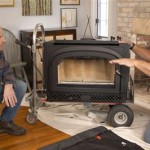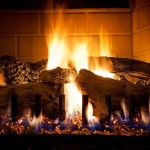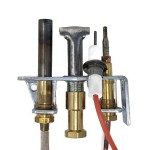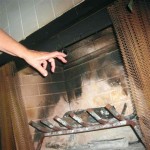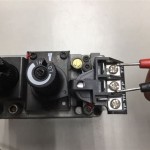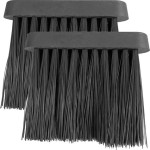Essential Aspects of a Wood Fireplace Heater System
Wood fireplace heater systems provide warmth and ambiance to homes, but they also require careful planning and maintenance. Here are some essential aspects to consider to ensure efficient and safe operation:
Firebox and Chimney Construction
The firebox is the heart of the system, where wood is burned. It should be made of durable material like cast iron or refractory materials to withstand high temperatures. The chimney channel needs to be straight and unobstructed for proper draft and smoke evacuation.
Heat Distribution
The primary goal of a fireplace heater system is to distribute heat throughout the living space. This can be achieved through convection, radiation, or a combination of both. Convection systems circulate hot air, while radiant systems emit heat directly onto surfaces.
Fuel Source
Seasoned hardwood is the ideal fuel for wood fireplace heaters. It burns efficiently, produces less smoke, and creates a longer-lasting fire. Avoid using wet or unseasoned wood, as it can result in excessive smoke and decreased heat output.
Air Supply
An adequate air supply is crucial for proper combustion. Ensure that the fireplace has a dedicated air intake vent to provide fresh oxygen for burning. Insufficient air supply can lead to incomplete combustion and smoke buildup.
Safety Features
Wood fireplace heater systems present potential safety hazards, such as sparks and embers. Install a spark arrestor on the chimney to minimize the riesgo of roof fires. Additionally, a fire extinguisher should be located nearby for emergencies.
Maintenance and Inspection
Regular maintenance is essential to keep the system operating efficiently and safely. This includes cleaning the firebox, chimney, and air intake vent. It's also recommended to have the system professionally inspected annually to identify potential issues and ensure compliance with safety regulations.
Additional Considerations
In addition to the above aspects, consider the following factors when selecting and installing a wood fireplace heater system:
- Heating capacity: Determine the size of the system required to adequately heat the living space.
- Esthetic appeal: Choose a design that complements the decor and style of the home.
- Energy efficiency: Look for systems that meet Environmental Protection Agency (EPA) standards for efficient burning.
- Emissions control: Consider systems with advanced emission control features to minimize environmental impact.
By considering these essential aspects, homeowners can make an informed decision about installing and maintaining a wood fireplace heater system that provides warmth, ambiance, and safety for years to come.

Fireplace As Heatingsystem Called Thermo Exclusive Property Blog

Boiler Stoves For Wood Powered Central Heating And Hot Water

Fht Stoves Linking Wood Burning With Central Heating Systems

Frequent Questions About Wood Burning Appliances Us Epa

The Best Wood Burning Fireplace Inserts Or Stoves Ecohome

How To Link A Woodburning Boiler Stove Into Your Central Heating System

Heating Water With A Wood Stove

Wood Stove Installation Cost In 2024 Forbes Home

Fht Stoves Linking Wood Burning With Central Heating Systems
Passive Design Sustainable Wood Fire Heaters Architecture
Related Posts

